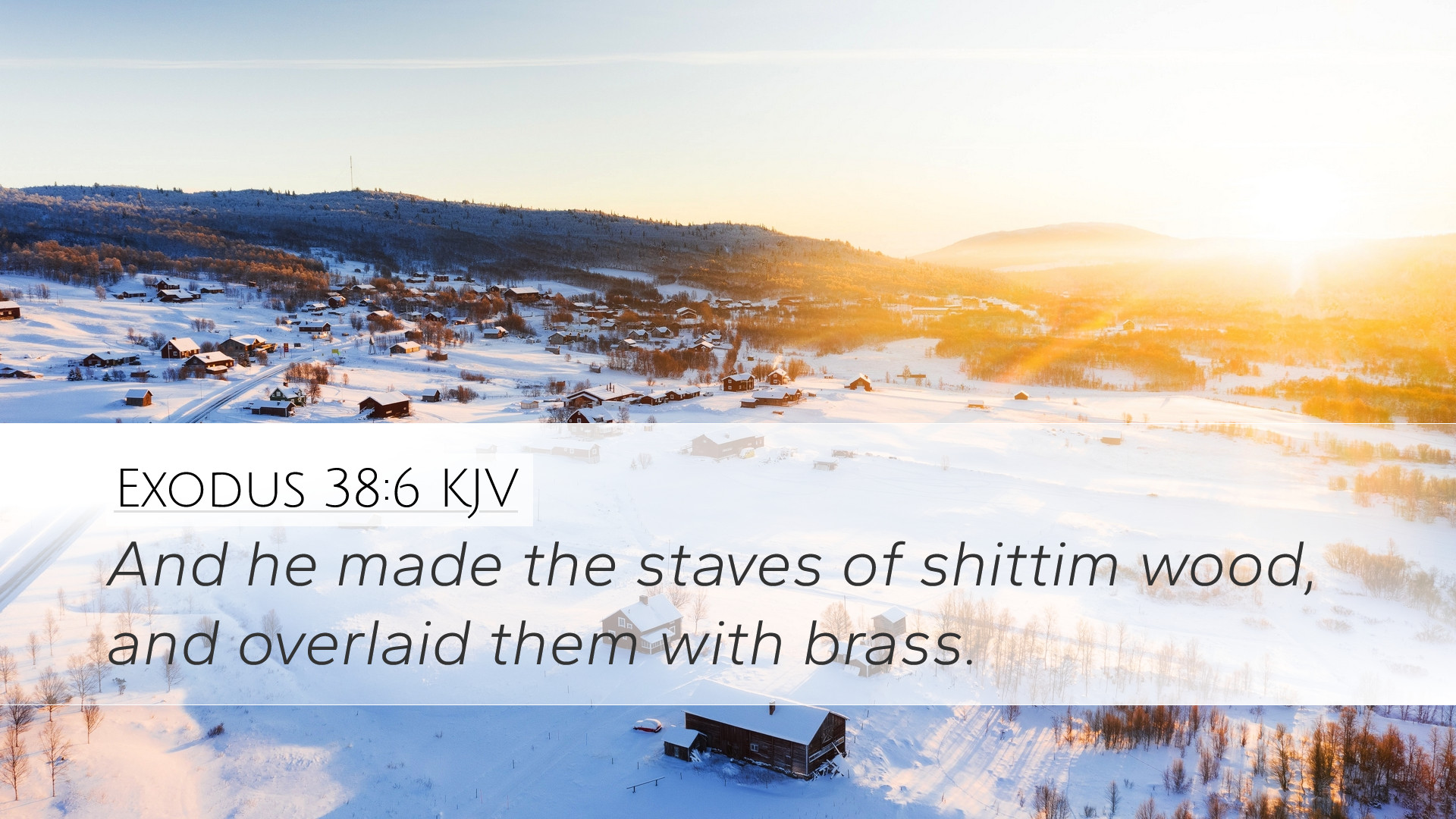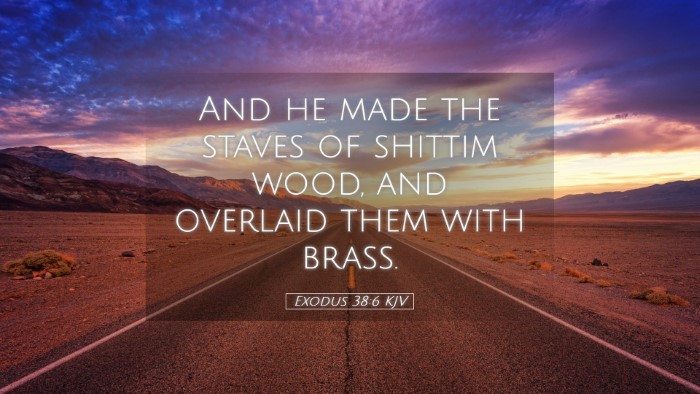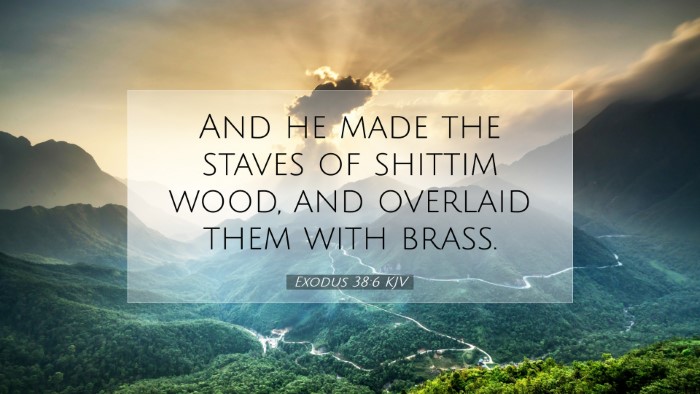Commentary on Exodus 38:6
Verse: Exodus 38:6 - "And they made the court of the tabernacle: for the south side southward the hangings of the court were of fine twined linen, a hundred cubits long:"
Introduction
This verse forms part of a detailed description of the construction of the tabernacle, the sacred dwelling place for God among His people during their journey through the wilderness. The elements and specifications outlined here reflect not only the aesthetic beauty required for a place of worship but also the symbolic significance of each component as it relates to God's covenant with Israel.
Contextual Analysis
Exodus 38:6 appears in a larger narrative that documents the construction of the tabernacle and its furnishings, following God’s meticulous designs given to Moses. The instructions highlight God's desire for holiness, order, and accessibility among the people.
1. The Construction of the Tabernacle
The tabernacle served as a mobile sanctuary, allowing the Israelites to maintain God's presence amidst them as they wandered. From the meticulous measurements to the materials used, everything signifies divine purpose and design.
2. The Court of the Tabernacle
The mention of the "court of the tabernacle" indicates a separation between the holy space and the outside world. It was a place of gathering and preparation for worship. Its dimensions and materials denote a boundary that emphasizes holiness, suggesting that entering into God’s presence requires reverence and acknowledgment of His sacredness.
Theological Insights
1. Symbolism of the Fine Twined Linen
Matthew Henry elucidates that the use of "fine twined linen" signifies purity and holiness. In Biblical terms, linen often represents righteousness and the holiness required as one approaches God. It implies that worship must come from a place of purity, reflecting the character of God Himself.
2. Length of the Hangings
The specific measurement of “a hundred cubits long” points toward the significance of completeness and perfection in divine order. Albert Barnes comments that the measurements given were intended to ensure a credible and formidable structure that would not only withstand time but glorify God’s design.
Historical Context
This construction occurred during Israel's exodus from Egypt, symbolizing their transition from bondage to freedom under God's guidance. Adam Clarke notes that these physical structures mirror the spiritual reality of God dwelling among His people and presenting them with a pathway toward worship and atonement.
1. A New Identity
As they built the tabernacle, the Israelites were developing a new identity as a community of worshipers, called to live in accordance with God’s laws. The tabernacle, particularly through the design of its courts, created a sacred environment where community and worship could thrive.
Practical Applications
- Understanding Holiness: The court serves as a reminder for modern believers about the importance of approaching worship with reverence. Pastors and leaders can draw from the context of this scripture to teach congregations about the holiness of God and the preparation necessary for worship.
- Physicality of Worship: Just as the Israelites built a physical structure, modern churches also reflect their worship. Leaders should consider how the design of worship spaces can facilitate or hinder a congregation's encounter with God.
- Community as a Core Element: The tabernacle was oriented toward communal worship, and in a similar vein, today’s church can foster unity among believers, encouraging communal gatherings within sacred spaces.
Conclusion
Exodus 38:6 is more than a simple structural specification; it embodies deep theological implications about God’s desire for relationship with humanity, the nature of holiness, and the community of worship. For pastors, students, theologians, and scholars, this verse serves as a vital reminder of the foundations of worship and the sacred spaces we create to encounter the divine.


